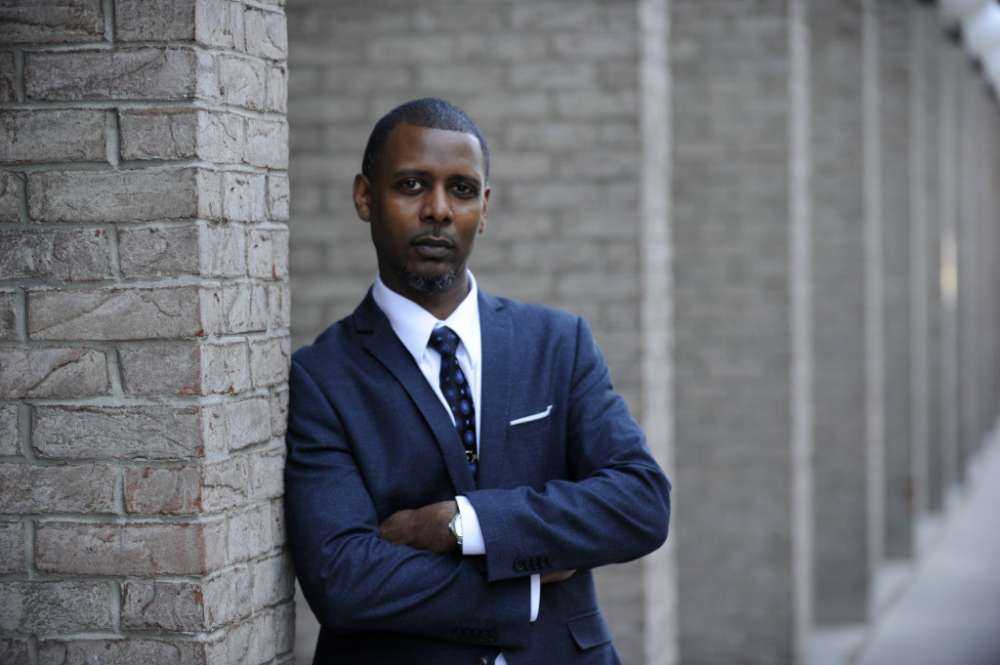on
BY ALYSSA MAHADEO
Confident, passionate and purpose driven, community advocate George Knia Singh has been defending the cause of Scarborough-Rouge River for twenty nine years. His determination and persistence has brought him to the forefront of the community lending his voice, speaking out against issues regarding educational improvements and youth engagement, bringing attention to social issues affecting the community such as racial carding, substance abuse and also the ever-present prevention of crime and violence in the city.
Born in Toronto to parents of Guyanese and Bermudian heritage, Knia’s positive attitude and determination has brought him through the trials and tribulations of life. As a single father and diligent community mentor he has first-hand experience traversing the rocky plains of the healthcare system and being deserving of quality education.
Recent graduate of Osgoode Hall Law School and named one of the People to Watch for 2014 by the Toronto Star, forty two year old Singh first found himself involved in politics in 1997. The Mega City elections were taking place and he felt that it was important for residents to have a candidate who really understood the needs of the community and what they were going though. The people needed someone in government that could offer perspective from the average person and he had confidence that it was a challenge he was willing to accept.
Four years prior in 1993 he was an independent business owner of a hip-hop recording studio. Over the course of those couple of years he had networked with many youth from within the community. His studio was a frequent spot for youth to come and record music and in 1996 he decided to implement co-op placements, working with the different boards of education within the city to host students and mentor them at his studio. Working closely with the youth of the community they brought to his attention personal issues they faced and explained social conditions that weren’t quite up to par. Hearing their stories of injustice Knia decided to take action and put himself forth as a candidate in the upcoming elections.
He quickly discovered that running for candidacy wasn’t all about community service, but directly related to how many volunteers you had and the amount of signs you could blanket the neighborhood with which was directly related to what financial resources you had at your disposal.
Knia didn’t let that discourage him. He decided to take a step back, regroup and devise a strategy for the next time the opportunity would present itself. By 2010 he had closed down the public location of his studio. The previous year his father had passed away and the loss deeply affected him as he was immensely grateful to the dedication and hard work both of his parents had committed to provide a stable environment for him during his formative years. Running his business at the recording studio hadn’t been as fruitful as he had hoped and after his father’s passing he knew that he needed to take steps towards leaving behind his own legacy that would honor all that his parents had done for him.
Knia’s intellect was sharp and his mind keen to gather more information to further educate himself. In 2010 he decided to go back to school to get his degree, applying to The University of Toronto as a mature student. This same year he put himself forward in politics for a second time running for election tackling all three levels of government municipally, federally and provincially.
He received positive feedback from potential voters, rallying behind the issues he would debate and the message he brought forth. Again he found himself lacking the manpower to do more, working with limited resources but still working hard to promote himself and make his face known within the community. It was an insightful experience, and through his campaign he found himself becoming more outspoken and making connections that he would be able to utilize in the future.
After the 2012 Danzig shooting in Scarborough, Knia was an active part of the effort to lobby the government to provide more resources to prevent crime and violence in the city. Simultaneously he was also a part of the Caribana Board fighting for the retention of the cultural property of the community. He was in the middle of a legal battle fighting to prove that Caribana belonged to the Caribana Arts Group working to secure the name and trademark of one of Toronto’s highly anticipated Caribbean summer events.
Knia believes everyone is capable of doing well if given the opportunity and the right support. He has been a strident campaigner for the fair treatment of all Torontonians regardless of race or socio-economic background. “For me it’s been all about having a responsible government,” Knia explains, “It has always been about bridging the gap between the average person and people in power. I find that too often our elected representatives are people who come from wealth, who are well connected; the average person tends to lose faith because they cannot identify with the people they are electing and that their vote doesn’t matter.”
Knia has made it his personal mission to change that; he has chosen to run for office because he knows that he represents a different way of approaching politics, looking at it from a very practical standpoint stating, “Every person is part of the government. We are all contributing taxpayers and we are all supposed to work together to find the best solutions for our society.”
Throughout his campaign, Knia has made it a point to be very open and honest with his position, strategically avoiding taking on the stereotypical persona of a politician. His main objective if elected is to be an elected official, not a politician, but an accurate representative of the average person in the community. “I desire to help make our society better in any way that I can and getting involved in government is one of the most effective ways to do that, providing you with the resources and public confidence to make change.”
Stay in the loop with exclusive news, stories, and insights—delivered straight to your inbox. No fluff, just real content that matters. Sign up today!
Reggae Diva’s Hit the Stage!












